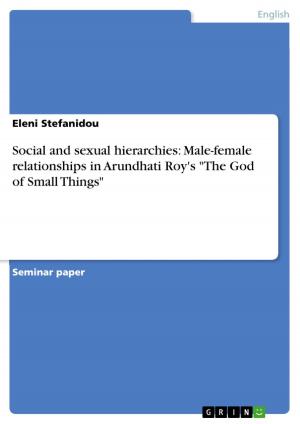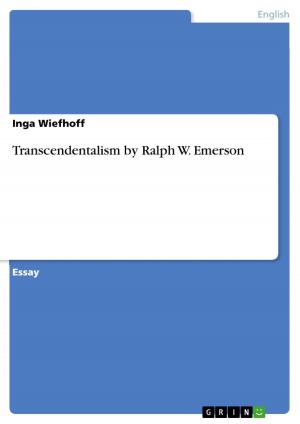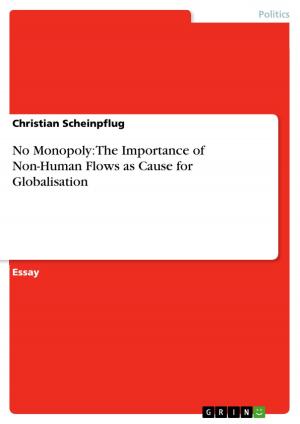| Author: | Martin Steger | ISBN: | 9783656271680 |
| Publisher: | GRIN Publishing | Publication: | September 12, 2012 |
| Imprint: | GRIN Publishing | Language: | English |
| Author: | Martin Steger |
| ISBN: | 9783656271680 |
| Publisher: | GRIN Publishing |
| Publication: | September 12, 2012 |
| Imprint: | GRIN Publishing |
| Language: | English |
Seminar paper from the year 2008 in the subject English Language and Literature Studies - Linguistics, grade: 2,0, LMU Munich (Anglistik), course: Varieties of English, language: English, abstract: About 1.25 billion people are living in India and Pakistan today which is about 18% of the world´s population, whereas the Indian subcontinent only makes about 3% of the available Landmass of our planet. (cf. Stang, 2002, 80 ff.) The Indian Government has enormous problems concerning administration, not only because of the size of the country and the mass of people living in India, but also because of the amount of different dialects, varieties and languages. The Indian Government states that there are 18 officially acknowledged languages in India. An overview of the language Situation can be seen on chart I in the appendix. The constitution though is written in English, which does not occur in that enumeration, not even in the table of the other 96 non scheduled languages of the Indian Census 1991. 'cf. www.languageinindia.com/nov2001/1991Languages.html (March 25, 2008)' The language of the former colonizer, English, is the only common language to the different groups in India and therefore an important tool concerning administration, court, trade and daily life. Almost the same situation can be observed in Pakistan, where the dispute about languages in 1971 even led to a civil war and the foundation of Bangladesh. 'cf. www.bpb.de/themen/4OJUFG,0,Die_Teilung_BritischIndiens_1947.html (March 22, 2008)' The focus of that work will therefore be on the development and state just as on the analysis of syntax and morphology of the English language in India and Pakistan. My research will largely be based on the works of as Raja Ram Mehrotra, Baraj B. Kachru, R.K. Agnihotria and A.L. Khanna, as well as Benrd Kotmann and Robert J. Baumgardner.
Seminar paper from the year 2008 in the subject English Language and Literature Studies - Linguistics, grade: 2,0, LMU Munich (Anglistik), course: Varieties of English, language: English, abstract: About 1.25 billion people are living in India and Pakistan today which is about 18% of the world´s population, whereas the Indian subcontinent only makes about 3% of the available Landmass of our planet. (cf. Stang, 2002, 80 ff.) The Indian Government has enormous problems concerning administration, not only because of the size of the country and the mass of people living in India, but also because of the amount of different dialects, varieties and languages. The Indian Government states that there are 18 officially acknowledged languages in India. An overview of the language Situation can be seen on chart I in the appendix. The constitution though is written in English, which does not occur in that enumeration, not even in the table of the other 96 non scheduled languages of the Indian Census 1991. 'cf. www.languageinindia.com/nov2001/1991Languages.html (March 25, 2008)' The language of the former colonizer, English, is the only common language to the different groups in India and therefore an important tool concerning administration, court, trade and daily life. Almost the same situation can be observed in Pakistan, where the dispute about languages in 1971 even led to a civil war and the foundation of Bangladesh. 'cf. www.bpb.de/themen/4OJUFG,0,Die_Teilung_BritischIndiens_1947.html (March 22, 2008)' The focus of that work will therefore be on the development and state just as on the analysis of syntax and morphology of the English language in India and Pakistan. My research will largely be based on the works of as Raja Ram Mehrotra, Baraj B. Kachru, R.K. Agnihotria and A.L. Khanna, as well as Benrd Kotmann and Robert J. Baumgardner.















